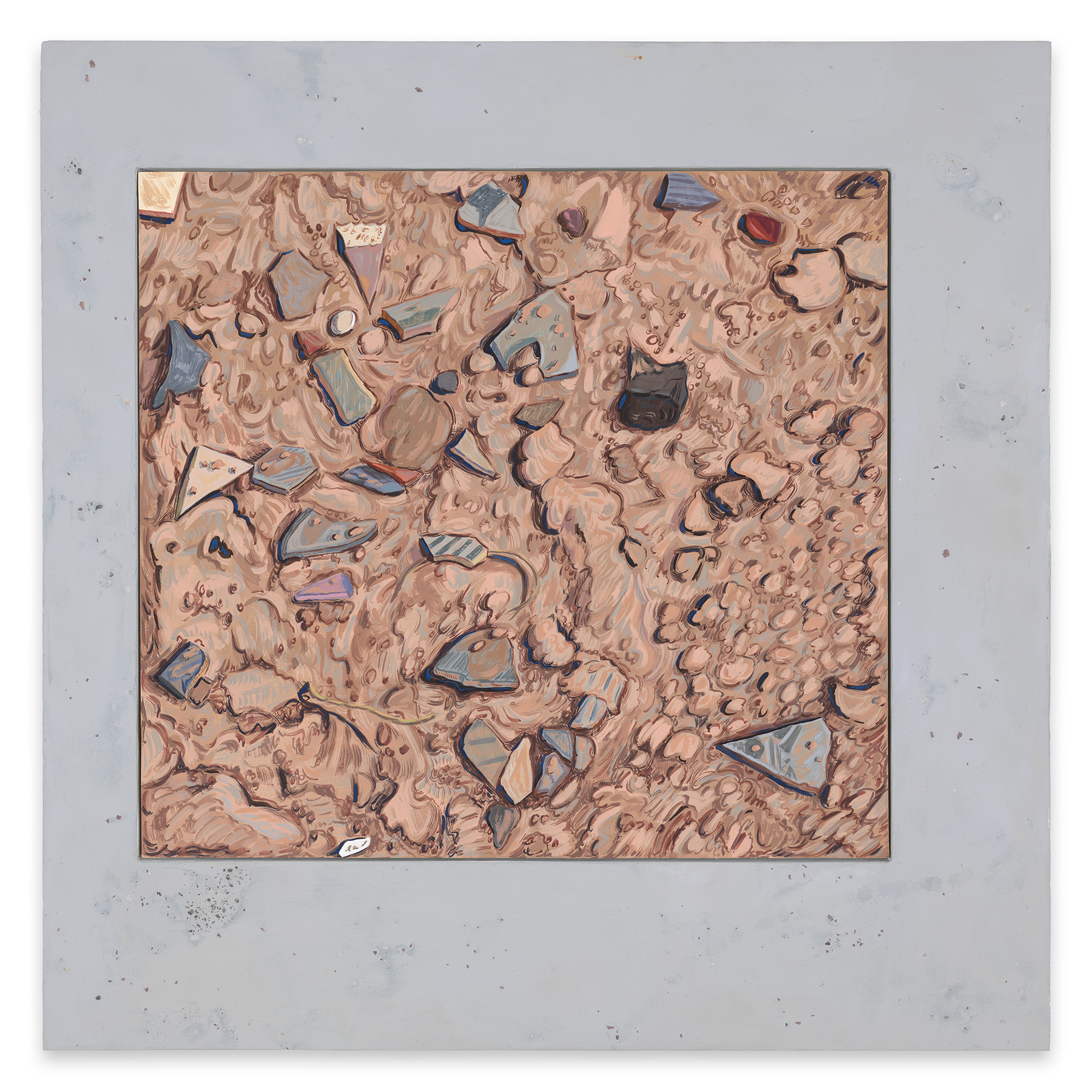Ku’uinge Pueblo Pottery Fragments
| Artist | Josephine Halvorson |
| Year | 2020 |
| Dimensions | 32 x 32 inches (81.3 x 81.3 cm) |
| Medium | Gouache and site material on panels |
| Credit | Courtesy of the artist and Sikkema Jenkins & Co., New York |
O’Keeffe never tired of exploring the area around her Ghost Ranch and Abiquiú homes. Halvorson also made a practice of walking and hiking while in Northern New Mexico. On a return visit, following her residency, she visited Ku’uinge, an ancestral pueblo site that was occupied from around 1366 to 1500. There she painted this work, a meditation on preservation and erasure.
